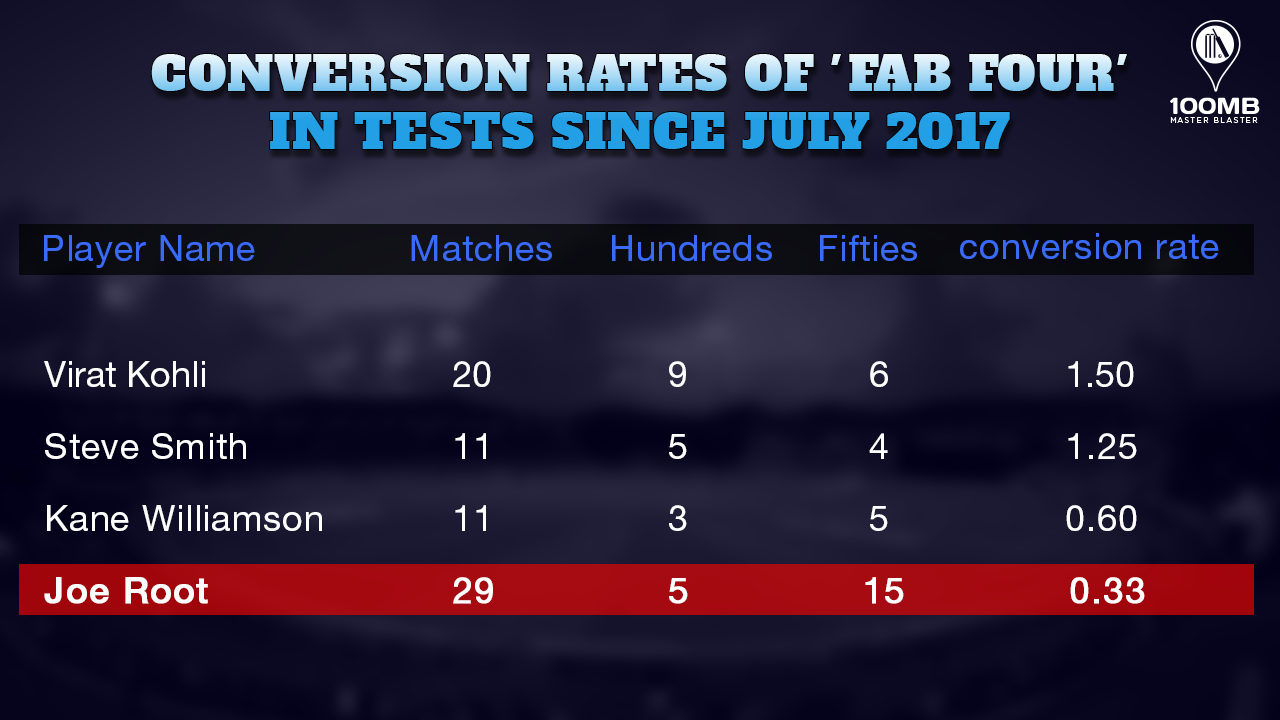Ashes 2019: Can Joe Root plant his feet firmly at Lord’s?

If there was even an iota of doubt about Steve Smith’s batting prowess after his year-long ban, his twin hundreds at Edgbaston put it to rest forever. The Australian’s prolific return has now put more pressure on the England skipper, who is already enduring a difficult phase in his Test career. Post England’s 251-run thrashing in the first Ashes Test, Joe Root is battling on multiple fronts – a deflated team mojo, out-of-form players, injuries. More importantly, his own recent form in the most challenging format of the game.
Test captaincy = dwindling form?
When he dons the ODI colours, Joe Root is easily the most consistent batsman in an English team full of showstoppers. In the recently concluded World Cup that England went on to win, his fine form helped him top the batting charts for his team. But his white-ball heroics haven’t quite converted into his performances in whites.
Since Root took over the Test captaincy mantle from Alastair Cook in 2017, his Test returns have seen a downward spiral. In the 29 Tests played as captain so far, he has scored 2209 runs at an average of 42.48, a sharp decline from his 52.80 before captaincy. His overall average too has fallen below the 50-mark (48.94).
Those numbers in isolation may look impressive, but not when compared with the rest of the ‘Fab Four’ of which Root is a part. Virat Kohli has instead bettered his pre-captaincy average of 41.13. He now averages 62.70 as India’s Test skipper. Steve Smith averaged 70.36 during his stint as Australia captain from 2014 to 2018, as compared to his average as a pure batsman (55.41). Kane Williamson’s average shot up tremendously after he became New Zealand captain in 2016, from 49.23 to 63.69.
Poor conversion rate

Another aspect of Root’s diminishing returns in Test cricket has been his conversion rate – he has notched 15 half-centuries and just 5 centuries since July 2017. In the 2017/18 Ashes, he couldn’t convert even one of the five fifties he scored in the entire series down under. Even if we consider only the last two years, if not the period since they became captains, Kohli, Smith and Williamson are all ahead with better conversion rates.
Change in batting position
Unlike his contemporaries, the England captain had to deal with a relatively unstable top order since Cook’s retirement. England have made constant changes to their top three in the last couple of years, from having inexperienced players as openers to surprise No.3 entries in Moeen Ali, Ben Stokes and even Jonny Bairstow. Root has suffered a personal loss of form whenever he’s batted at No.3 – an adjustment he made yet again before the start of this series. In 24 Tests he’s played at the No.3 position, Root has averaged 40.57, whereas he averages 48.00 at No.4 and a staggering 71.44 at No.5.
Despite the obligatory promotion up the order, Root ended up with scores of 57 and 28 in the first Test. With the added pressure of captaincy and an ill-favoured batting position, the Englishman still doesn’t look completely out of sorts. Which is why he is the key to England’s comeback in the Ashes this year.
Joe Root, England’s biggest hope
With Jason Roy and Rory Burns still finding their feet in Test cricket, the onus will once again be on captain Root to revive England’s fortunes. The second Test will be played at Lord’s, where the batsman averages 50-plus, both overall and against Australia. He also has three centuries at the ground, one of which came against Australia six years ago. Another was an unbeaten 200 against Sri Lanka a year later. It’s no coincidence that Root’s first Test hundred as the Test captain came at the Mecca of Cricket. With England in desperate need of a comeback, all eyes will be on Root to turn back the clock.
